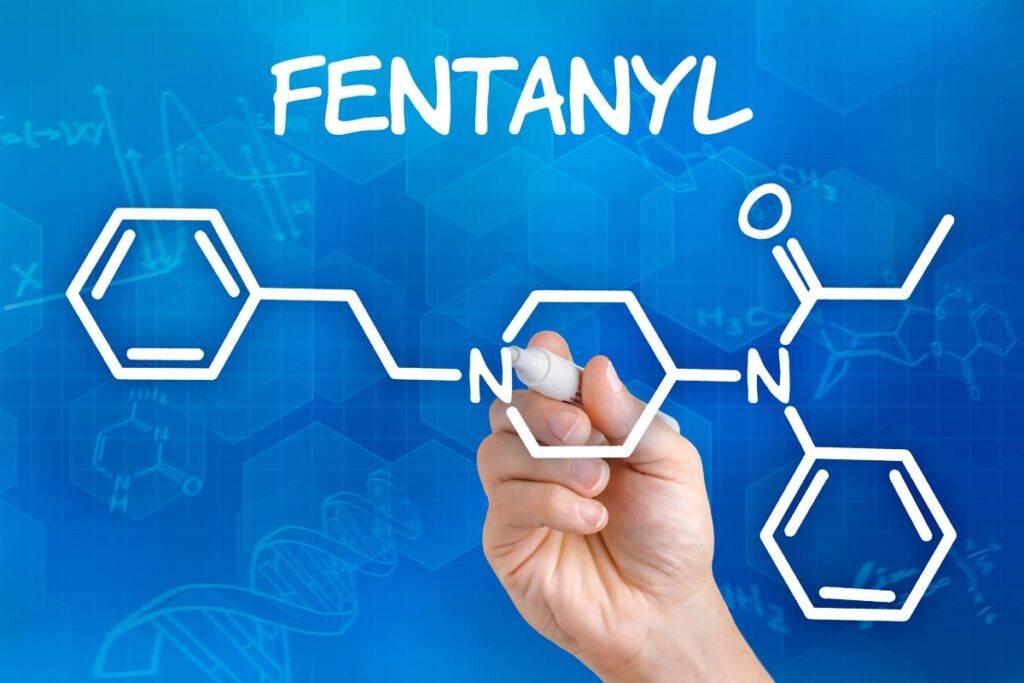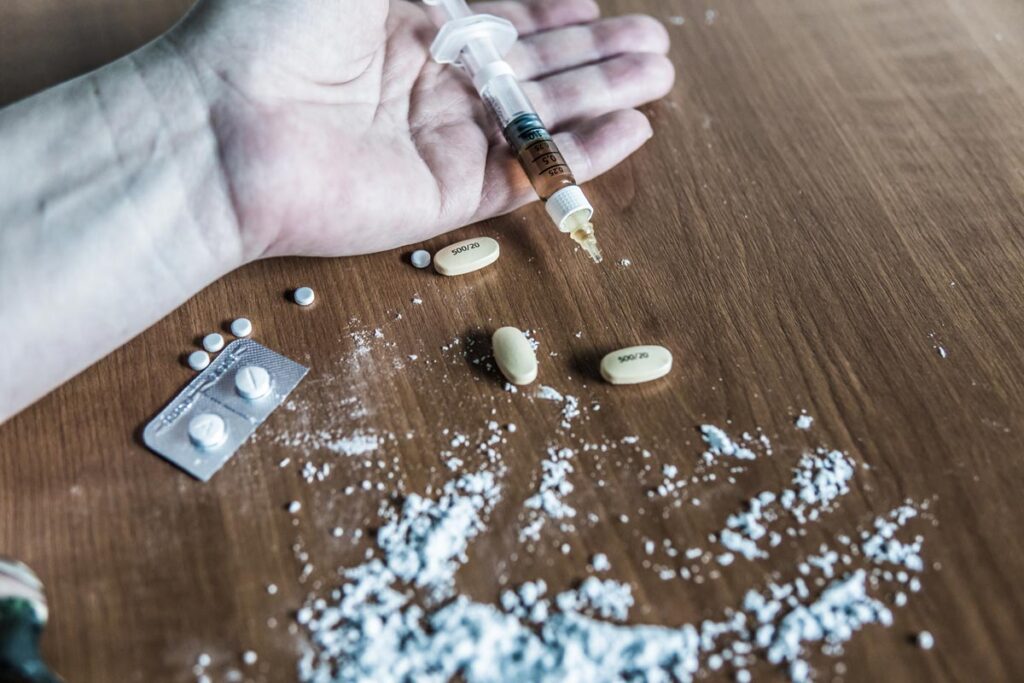We Accept Most Insurance. Please Call to Verify Yours.






![]()







Fentanyl is an opioid drug, used as a prescription painkiller. It’s also more and more often found as an illicit street drug. Fentanyl is one of the strongest drugs on the market, coming in at over 100 times stronger than morphine. That makes it attractive for illicit drug manufacturers to sell, as they have to hide significantly smaller quantities of a drug. It also makes it a popular choice for lacing low-quality drugs or non-potent drugs with – because it’s extremely strong. Someone injecting a dose of what they think is heroin might be injecting baby powder and fentanyl.
Today, that’s so much the case that that fentanyl is found in artificial drugs of every kind, including counterfeit OxyContin. In 2020, over 3 million people used fentanyl at least once a month. And, in the same year, it was responsible for about 70% of all opioid-related overdose deaths. With almost 108,000 Americans dying of drug overdose in 2021, that is significant. In 2021, that worked out to 150 people dying of a fentanyl overdose every day.
Of course, fentanyl isn’t all bad. Under medical supervision and high production standards, it can be a lifesaving drug – allowing people to make it through significant pain after surgeries. But, without production quality, strict dosage, and medical monitoring, fentanyl can be extremely dangerous.
If someone is overdosing on fentanyl, you might not notice until they are very far gone. That’s because people who are heavily using often do so with other people using. In addition, an overdose can look a lot like falling asleep, especially if the person overdosing doesn’t start to choke.
However, signs of overdose include:
People suffering from an overdose can look similar to people who fall asleep after becoming a little too intoxicated. However, overdosing normally restricts the respiratory system, meaning that person will start to have breathing issues. That can result in slowed or strained breathing. And, they could start to choke or gurgle. If someone is doing this and they can’t wake up, it’s important to call 911.
People who go into overdose may stop breathing, they may go into a coma, and they may choke on vomit or saliva. In addition, someone going into overdose may experience a heart attack because of increased pressure on the cardiovascular system (reduced oxygen, increased stress, panic). This means that the mortality rate without treatment is very high.

Even if you aren’t sure someone is having an overdose, it’s important to react as if they are. Doing so could save their life.

While TV shows and movies often show putting people in cold showers or slapping them to “shock” them out of the overdose, this doesn’t work. A cold shower could also cause more harm than good. You’re better off keeping the person warm, keeping them awake, and holding their attention as long as possible. And, because choking is one of the biggest causes of death in early overdose, make sure you lay them on their side.
Naloxone is a potentially life-saving drug that is available in every state of the United States without a prescription. You can buy it at almost any pharmacy, including Walmart, Walgreens, etc. If you’re unsure, you can also check on the Narcan website to see a list of local retailers that offer it.
Naloxone is an opioid overdose reversal drug. It essentially temporarily stops opioids from being active in the brain, meaning it can pull someone out of overdose. Of course, if that person is addicted, it also means they’ll go into withdrawal. That could mean they need medical attention.
Naloxone is most commonly sold in a 2-pack of nasal sprays. Here, you insert the spray into the person’s nostril and press. If the person doesn’t start to pull out of the overdose within about 10 minutes, you should administer the second.
However, Naloxone only lasts about 30 minutes. An intravenous dose of fentanyl will last 2-22 hours. If you’re using lozenges or patches, highs could last up to 36 hours – but usually closer to 17. That person will need medication for the full duration of that or they could slip back into overdose. They need medical care and an intravenous administration of Naloxone to prevent that overdose.
Fentanyl is up to 100 times stronger than morphine. Yet, it’s often sold as morphine or heroin. Illicitly manufactured fentanyl is also not made with any kind of supervision and some can be as much as 100 times stronger than normal fentanyl. This means that even a tiny dose can result in overdose and unless you’re sourcing fentanyl from a prescription, you never know what you’re getting.
Quitting fentanyl without rehab and therapy to help you uncover the underlying causes behind it can leave you vulnerable to relapse. And, that relapse will often come with reduced tolerance, meaning you’re even more likely to overdose. Therefore, quitting should always include mental health help from counselors and therapists specialized in treating behavioral addiction and substance use disorders.
If you or a loved one is using fentanyl illicitly, it’s important to get help. Fentanyl is never safe, there’s always a significant risk of overdose and addiction, and any usage of it means you are prioritizing getting high over health.
If you or a loved one is seeking help for alcohol or other substance abuse, contact us at Stairway Resource Center today. The Stairway Resource Center offers a 60 to 90-day outpatient program that takes place in a community setting. We offer dual diagnosis treatment and daily group and individual therapy for our clients.

Adult Psychiatrist
Kristen Nelson, MD is double board certified in General Psychiatry and Addiction Psychiatry. She completed her psychiatry residency at Eastern Virginia Medical School and pursued an addiction psychiatry fellowship with UCLA. She has extensive training at Veteran Administration hospitals. Areas of expertise are post-traumatic stress disorder, mood disorders, anxiety disorders, substance use disorders, and psychopharmacology.